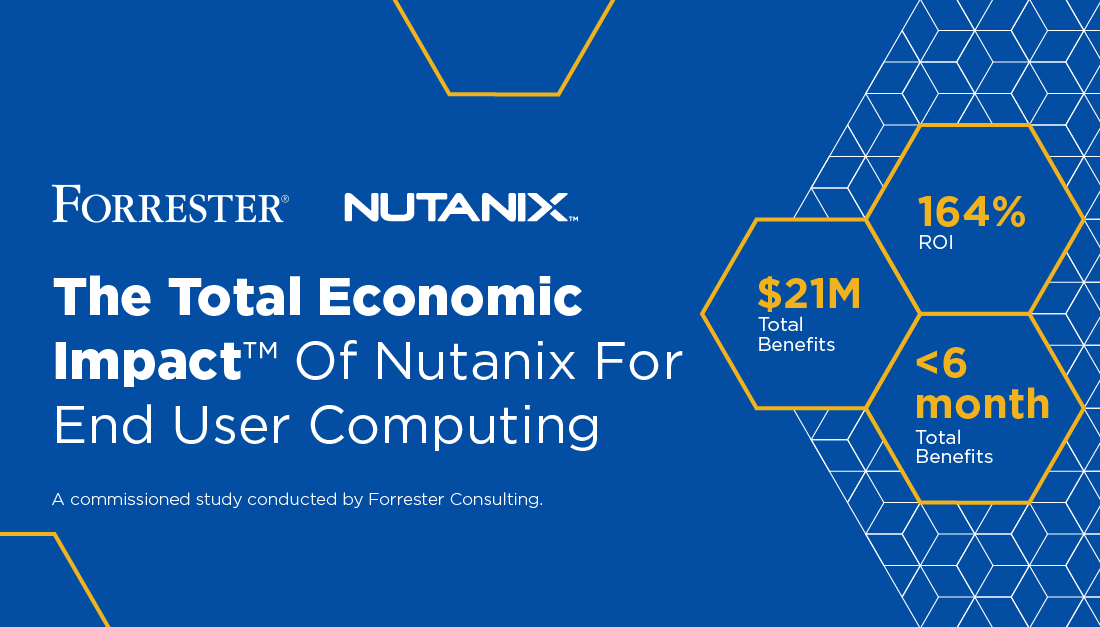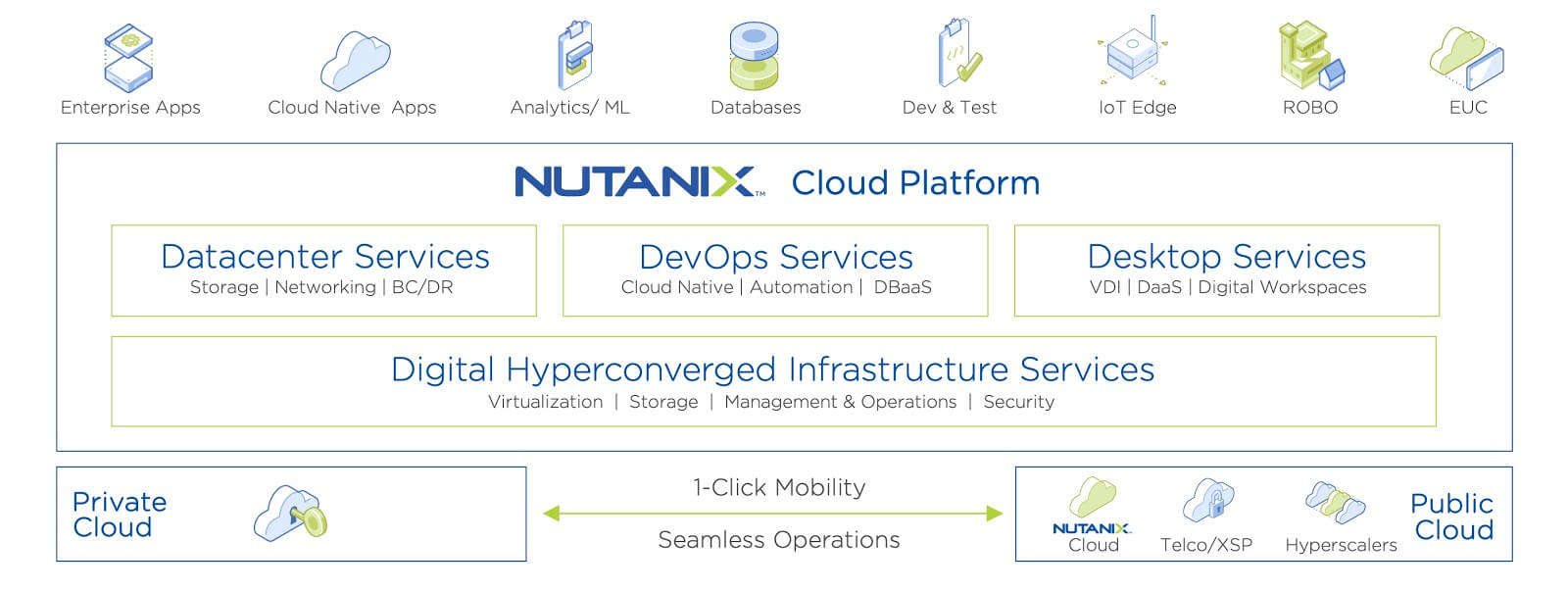There are few more pressing issues facing organizations right now than ensuring that their employees are safe, healthy, productive, and connected. The former two concerns frequently require the ability to work remotely, while the latter two require seamless, reliable, and secure access to desktops, applications, and data. Managing endpoint devices is complicated, expensive, and time consuming under normal circumstances, but exponentially so under the current conditions. End user computing solutions such as virtual desktop infrastructure (VDI) and Desktop as a Service (DaaS) have stepped into the breach--for many use cases, they are ideally suited to solve the logistical challenges of the moment, while also future-proofing organizations for the future of work and whatever disruptions await over the horizon.
These solutions are not new--at this point they’re quite mature--yet many companies have been hesitant to avail themselves of their advantages due to concerns about complexity, cost, or both. In the past, issues around infrastructure complexity have left technology and business leaders wondering whether the costs actually outweigh the benefits--in some cases, they did.
Nutanix has developed hyperconverged infrastructure and desktop as a service solutions that directly address these challenges, providing the simple, scalable, and secure operations necessary to finally fulfill EUC’s promise. Nutanix EUC solutions power VDI software from Citrix and VMware at any scale and deliver high-performance desktops as a cloud service.
The Difference that Nutanix Makes
Nutanix recently commissioned Forrester Consulting to conduct a Total Economic Impact™ study of the value that Nutanix customers experienced by running their EUC solutions on Nutanix. The results were striking: a 164 percent ROI over a 3-year period, a payback period of less than six months, and hundreds of thousands of hours saved due to improved user experience, to name just a few highlights.

Forrester arrived at its estimates of economic impact by interviewing Nutanix customers who switched from legacy infrastructure to Nutanix HCI to support their EUC workloads. Forrester created a financial model framework that considered cost, benefit, flexibility, and risk factors involved in the investment decision (see the study for details on the TEI methodology). They then designed a “composite organization” based on the interviewed organizations to identify and evaluate the effects of implementing Nutanix.
Forrester found that, over a three year period, the composite organization based on Nutanix customers achieved $13 million in net present value--that is, they spent $8 million on the solution (including costs such as licensing, implementation and training, and operational resources (FTEs))--but experienced $21 million in benefits.
Other key findings included:
- Up to 35 percent lower capex--Forrester estimated that hardware savings alone accounted for more than $13.7 million to the organization.
- 90 percent faster device provisioning--VDI on Nutanix provides a dramatically shorter provisioning cycle, worth more than $2.7 million to the organization.
- Simplified EUC management frees up to 3.25 FTEs to drive innovation. Simplified operations that include self-turning and self-healing capabilities free administrators to work on tasks that add value to the organization.
- Device refresh cycle extended by two years by adopting thin devices for VDI, saving up to $1.5 million.
Stretch your EUC Investment Dollars with Nutanix Cloud Platform
Forrester built its economic model specifically around benefits our customers reported deriving from the core Nutanix hyperconverged infrastructure solution. However, the Nutanix Cloud Platform offers an array of services that help customers get even greater value from their EUC on Nutanix investment.

Reliable Business Continuity and Disaster Recovery
Business continuity is top of mind for IT executives as the world grapples with the pandemic. Ensuring the highest level of business application availability requires a comprehensive approach that includes resiliency at every level--at different application tiers, within datacenters, and in the cloud. Datacenter services of the Nutanix Cloud Platform help enable our customers to build their own DR site using built-in recovery planning and orchestration capabilities, or to subscribe to disaster recovery as a service, through Nutanix Xi Leap.
With the recent launch of Nutanix Clusters, organizations can easily move virtual desktops to Nutanix clusters running on a variety of cloud solutions, including Nutanix cloud on-premises, managed service providers, or hyperscalers such as AWS and other public cloud providers.
In addition, the Nutanix Cloud Platform enables customers to back up their applications and data using Nutanix Mine, an integrated secondary storage platform that leverages industry leading data protection software from Veeam and HYCU to meet each organization’s particular business needs. Finally, for long-term retention, customers can use Nutanix Objects to back up data to any S3-compliant object storage service.
Powerful Defense Against Ransomware Attacks
Ransomware attacks are on the rise as criminals have realized that denying access to data can be just as profitable as theft. Ransomware encrypts an organization's data, preventing access until a payoff is made. Unfortunately, end-user desktops are a common infection point. With the rise in remote workers and the resulting increase in EUC deployments, it’s important to consider strategies for preventing, detecting, and recovering from a ransomware attack.
Combating ransomware requires effective prevention strategies and tools. Nutanix Cloud Platform is hardened and secured using industry best practices, and includes built-in auditing and remediation capabilities to help enterprises prevent these attacks. Prism Central provides role-based access control (RBAC) for HCI storage and virtualization, and supports identity and access management (IAM), which includes support for directory services and the use of multifactor authentication. Adopting Nutanix AHV virtualization with Flow microsegmentation extends the secure configuration and audits to the hypervisor layer. Flow provides network and application segmentation for virtual machines, which can limit the spread and impact of a ransomware infection. To protect data against ransomware, Nutanix Objects can create immutable storage buckets in WORM mode for key data and backup images.
When ransomware attacks occur, rapid detection and mitigation is critical. The Nutanix Cloud Platform includes several capabilities that do just this. Nutanix Prism Pro provides insights and analytics that send alerts when there are resource utilization anomalies. Nutanix Files includes an intelligent analytics engine that provides insight into file share activity and anomalies. When combined with codeless task automation from X-Play, alerts and events trigger security operations that can contain the ransomware and its spread.
And don’t forget that business continuity and disaster recovery (BCDR) plans encompass much more than natural disasters; enterprises need to prepare for data recovery and continued business operations in the event of malicious activities such as ransomware attack.
Cost Intelligence and Optimization Driving Effective Cloud Strategy
Just as enterprises have had to manage server and VM sprawl, they are now faced with cloud resources sprawling across multicloud and hybrid environments. Enterprises must consolidate the cloud resources running virtual apps and desktops if they are to get a decent return on their hybrid cloud investment.
Nutanix Beam helps enable enterprises to take control of their total cloud spend with automated cost governance policies. Beam provides unified visibility into public and private cloud spending, including clusters, VMs, and other services. For private cloud, it captures essential costs such as hardware, software, power and cooling, datacenter infrastructure, telecom, and IT admin salary costs, which are calculated based on configurable industry standards.
Organizations can manage their overall hybrid cloud spend with Beam by tracking cloud consumption (including specific users, teams, applications, and budget owners), enabling chargeback policies, and setting budget alerts. Beam also helps enterprises realize cost savings through automatically right-sizing cloud resources and intelligent resource purchases based on consumption history.
Efficient Storage for Virtual User Profiles and Department Data
Enterprises turn to end-user computing for lower administrative overhead, increased employee productivity, and costs savings. However, inefficiencies in storing remote desktop user profiles and departmental data can undermine the value that EUC solutions deliver. Network attached storage (NAS) promised to alleviate the pain points associated with file storage, but as an infrastructure silo, it remains encumbered by complexity and inefficiency. Nutanix Files, a fully integrated file server solution, provides exceptional performance, enterprise-grade availability and resilience, and cloud-like flexibility, ease of use, and scalability.
----
When Nutanix launched over 10 years ago, end user computing was the first workload that showcased the transformative potential of hyperconverged infrastructure. The Forrester TEI study validates the power of EUC on Nutanix, a simple, scalable, and secure solution that delivers extraordinary value to its customers. Nutanix offers the most comprehensive platform for End User Computing, with significant efficiencies from cloud consolidation and management, integrated one-click or zero-touch storage operations, advanced security capabilities, cost intelligence and optimization, and industry-leading business continuity and disaster recovery capabilities.
Please visit https://www.nutanix.com/solutions/end-user-computing to learn more about how Nutanix eliminates the pitfalls of traditional virtual desktop and application implementations.
And don’t forget to click here to read the study in full, including commentary from Nutanix customers about their experience running EUC on Nutanix.
© 2020 Nutanix, Inc. All rights reserved. Nutanix, the Nutanix logo and the other Nutanix products and features mentioned on this post are registered trademarks or trademarks of Nutanix, Inc. in the United States and other countries. All other brand names mentioned on this post are for identification purposes only and may be the trademarks of their respective holder(s). This post may contain links to external websites that are not part of Nutanix.com. Nutanix does not control these sites and disclaims all responsibility for the content or accuracy of any external site. Our decision to link to an external site should not be considered an endorsement of any content on such a site. Certain information contained in this post may relate to or be based on studies, publications, surveys and other data obtained from third-party sources and our own internal estimates and research. While we believe these third-party studies, publications, surveys and other data are reliable as of the date hereof, they have not independently verified, and we make no representation as to the adequacy, fairness, accuracy, or completeness of any information obtained from third-party sources.
This post may contain express and implied forward-looking statements, which are not historical facts and are instead based on our current expectations, estimates and beliefs. The accuracy of such statements involves risks and uncertainties and depends upon future events, including those that may be beyond our control, and actual results may differ materially and adversely from those anticipated or implied by such statements. Any forward-looking statements included in this post speak only as of the date hereof and, except as required by law, we assume no obligation to update or otherwise revise any of such forward-looking statements to reflect subsequent events or circumstances.